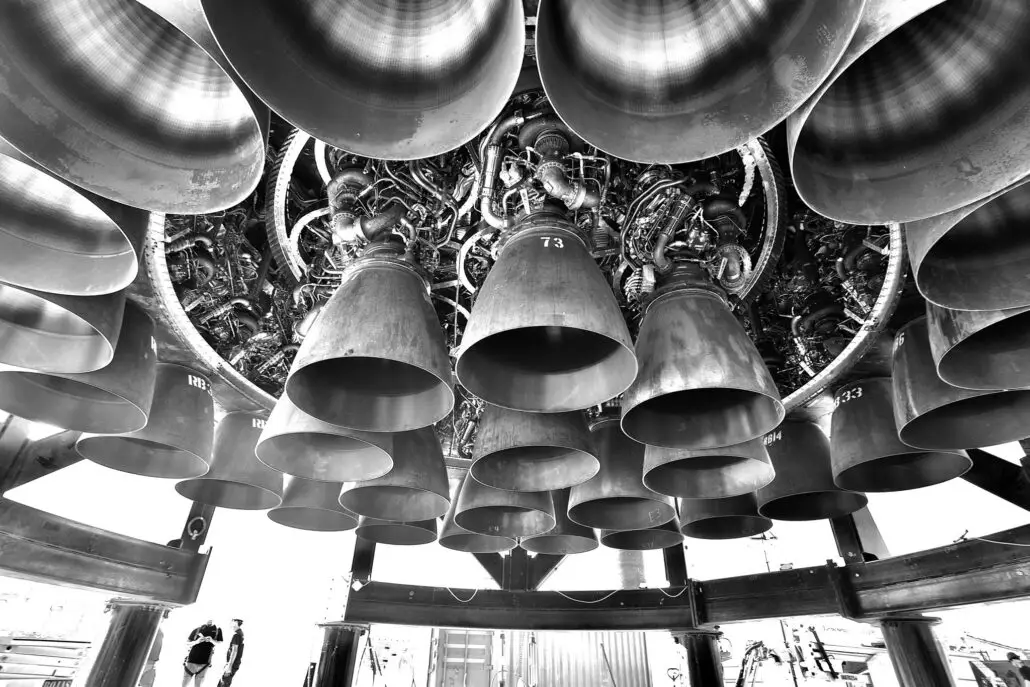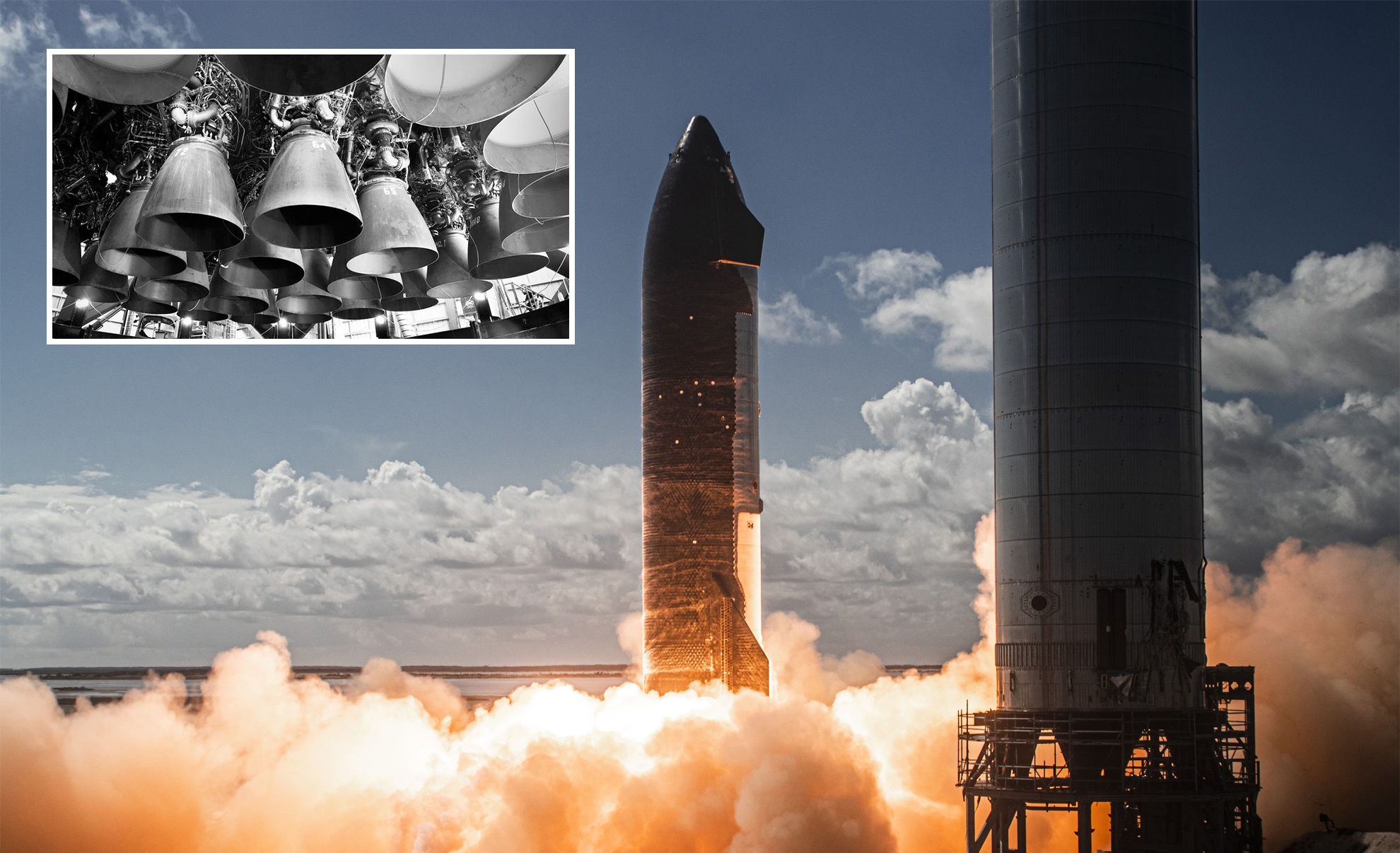A 50 percent increase in the number of Raptor engines and longer propellant tanks are among SpaceX CEO Elon Musk’s plans for future Starships, or at least specific types of those ships.
Three months earlier, in a tweet, the CEO had said that Starship was “begging for an additional 3 engines.” On December 17th, the CEO confirmed the intentions. Musk may have been alluding to the fact that a rocket-powered by a 9-engine Starship and a 33-engine Super Heavy booster would have 42 engines, a number made famous as the “answer to the ultimate question of life [and everything]” in Hitchhiker’s Guide to the Galaxy, both of which the CEO enjoys loudly. As in the instance of Starship, it is almost hard to differentiate a joke from a genuine, serious strategy.
Regardless of where the idea came from, the addition of three more Raptor engines to Starship would bring the total up to nine, and the tanks would be extended.
33
— Elon Musk (@elonmusk) September 18, 2021
With that, Ship is basically begging for an extra 3 engines
— Elon Musk (@elonmusk) September 18, 2021
Yup. Next booster will have 33 Raptor 2 engines, with 13 steering.
Ship is being upgraded to 9 engines (3 sea-level gimbaling, 6 vacuum fixed) with increased propellant load.
— Elon Musk (@elonmusk) December 18, 2021
An optimal nine-engine Starship’s tanks would be stretched by about 25% to accommodate an additional 300 tonnes (650,000 lb) of cryogenic liquid oxygen and methane (LOx/LCH4), according to amateur modelers who are generally capable of estimating rocket performance given enough information about the rocket’s structures, shape, and engines.
The improved Starship would have a liftoff mass of around 1600 tonnes (3.5 million pounds) and stand approximately 55 meters (180 feet) tall – approximately 10% higher than the present ships.
It is expected that, at stage separation and close to vacuum, a stretched Starship with three sea-level optimized Raptors (RCs) and six vacuum-optimized Raptors (RVacs) will produce at least 2000 tonnes (4.4 million pounds of thrust) and possibly more than 2250 tonnes (5 million pounds of thrust), depending on engine performance.
In terms of thrust, Starship, which is an upper stage, would be just 10% less powerful than the first stage of Falcon Heavy, the most powerful operational rocket in the world at that level of performance.
If Elon is right with >300 bar, a 9 engine Ship with 300 t more propellant could target 220 t to 200×200 km / 32°. Good thing: Booster would need less boost back propellant. Obviously, we gotta see if I'm right with my mass estimates. And I'm still not sure about SL Isp. Anyone? pic.twitter.com/vKhXq0nB5a
— Aeneas (@Phrankensteyn) December 19, 2021
What matters most is how a stretched, nine-engine Starship would affect the entire performance of that rocket’s launch vehicle, regardless of its thrust, size, weight, or other characteristics. Unofficial modelers claim that the results are significant: when compared to a ‘normal’ Starship with a six-engine upper stage and a 33-engine booster, the stretched ship could theoretically increase the amount of payload the rocket can launch into low Earth orbit (LEO) from about 150 tonnes to 220 tonnes or more (330,000 to 485,000+ lb), representing an almost 50% increase.

Even more impressively, according to a recent comment from Musk, who stated that the Starship – unlike almost all other rockets – will not temporarily throttle down during ascent, the total payload performance could be slightly less than 230 tonnes (approximately 500 000 lb), which is more than 50 percent greater than the shorter six-engine Starship.
The addition of nine Raptors to Starship, as well as the expansion of its tanks, is a no-brainer if those projections are correct. It may slow development and increase the cost of all nine-engine ships by a significant fraction, but a 50 percent increase in payload performance would significantly improve the efficiency of Starship’s more ambitious Moon and Mars launch profiles, which necessitate numerous orbital refueling missions.
Something like this maybe? pic.twitter.com/NI1lSwuOEv
— The_Denks (@TheDenks) December 18, 2021
In practice, a 50 percent increase in payload would let SpaceX execute the vast majority of refueling missions more effectively, rapidly, and affordably. The new Starship version in low-Earth orbit may take just seven tanker launches instead of the usual eight or ten to properly refuel it, even if the upgrade plans call for all Starships to be extended and carrying nine Raptors.
According to the latest indications, SpaceX is not opposed to maintaining multiple distinct Starship variants. As a result, spacecraft that are solely dependant on refueling (Moon and Mars landers, in particular) could maintain their current size of about 1200 tonnes (2.65 million pounds), with six Raptors. A fleet of improved Starships could therefore refill their smaller siblings with just 5-6 tanker launches, reducing the overall fuel consumption.
Although it is possible that the additional mass necessary to extend Starship 5.5m (around 4 tonnes or 9000 kg) would be little, it is possible that SpaceX will choose to stretch all Starship versions instead. As a result, for variants such as NASA’s HLS Moon lander and future Marsbound Starships, which rely entirely on refueling to reach their destinations, longer tanks, and more propellant storage could significantly increase the amount of payload that could be sent to the Moon, Mars, and other high-energy destinations.
After everything has been said and done, it will be intriguing to hear further information from SpaceX and Musk on how precisely the enhanced Starship design may assist those operations in the following weeks and months.

